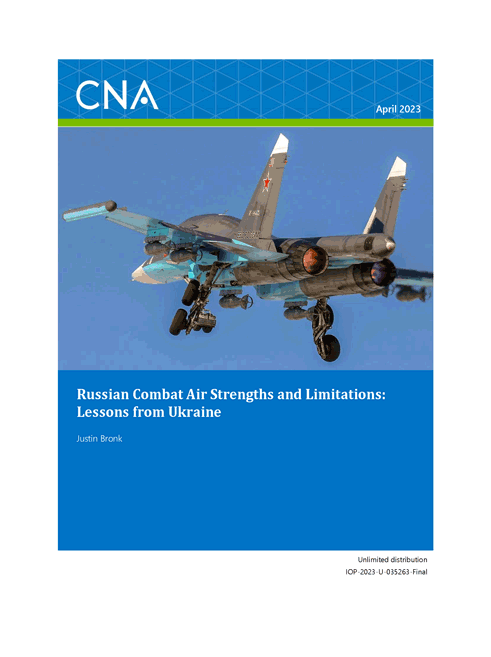Russian Combat Air Strengths and Limitations
Lessons from Ukraine about Russian Combat Air Strengths and Limitations
One of the defining features of the February 2022 Russian invasion of Ukraine and subsequent full-scale war has been the inability of the much larger and more technologically advanced Russian Aerospace Forces (VKS) to establish and exploit air superiority over its Ukrainian opponents. This came as a surprise to most Western and Ukrainian military and civilian analysts and has prompted a widespread reappraisal of the current capabilities of the VKS and, perhaps more importantly, the potential threat that it can pose in the medium term. However, these efforts have been hindered by the lack of granular information about the actual tactics and operational tempo of VKS operations over Ukraine.
For external analysts, areas of VKS weakness have generally been possible to infer from the absence of visible operations and destructive effects. Examples of visible weakness include the VKS’s inability to effectively conduct suppression and destruction of enemy air defense (SEAD/DEAD) operations, or to project fixed-wing or rotary strike sorties over most of Ukraine. However, the sorties that Russia’s combat aircraft have been flying and the effects they have been achieving are much harder for outside observers to see and analyze. In the land domain, ubiquitous small unmanned aerial vehicles (UAVs) and handheld cameras have provided a rich, albeit fragmentary, source of information on the tactics and nature of operations being undertaken by both sides at each stage in the conflict. In contrast, footage available for air operations has been limited to cockpit footage that is carefully collated and released periodically by both sides and clips filmed from the ground of aircraft either flying past or sometimes being engaged by surface-to-air missiles (SAMs).
To help bring greater granularity to the Western picture of Russian combat air operations in Ukraine, the British think tank the Royal United Services Institute (RUSI) produced a special report based on face-to-face interviews conducted in Ukraine in August and October 2022 with senior Ukrainian Air Force (UkrAF) aviation, ground-based air defense (GBAD), intelligence, maintenance, and capability development commanders. In compiling this report, the authors also inspected and disassembled significant numbers of Russian missiles, UAVs, and other weaponry, and conducted numerous secondary interviews with external intelligence professionals to cross-reference the material gathered. This paper builds on that work to assess the strengths and weaknesses of the Russian VKS as the war in Ukraine moves towards its second year.
The paper begins with an analysis of the major successes and failures of the VKS in operational and tactical terms during 2022. Next, it provides an analysis of the likely core reasons for the significant differences between the observed combat performance of the VKS over Ukraine and pre-war assessments. The paper then concludes with a section that examines the potential medium-term threat posed by the VKS to both Ukraine and, potentially, European NATO countries.
Download reportDISTRIBUTION STATEMENT A. Approved for public release: distribution unlimited.
Details
- Pages: 26
- Document Number: IOP-2023-U-035263-Final
- Publication Date: 4/17/2023
